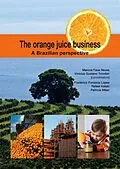Inhalt
Initial message.- An overview.- Mapping of the citrus economy.- 1. The citrus sector in Brazil.- 2. Brazilian GDP versus agricultural GDP.- 3. Brazilian leadership.- 4. Citrus exports.- 5. Destinations of exports.- 6. Tariff barriers.- 7. Phytosanitary barriers and technical requirements.- 8. Exchange rate.- Citrus fruit production mapping.- 9. Evolution of global orange production.- 10. Evolution of Brazilian orange production.- 11. Specialty of the major producing countries.- 12. Orange juice production.- 13. Brazil's citrus belt (São Paulo and Triângulo Mineiro).- 14. Comparison between the production in São Paulo/ Triângulo Mineiro region and Florida.- 15. Stratification of production by producer profile in Brazil's citrus belt.- 16. Varieties in the orchards.- 17. Pests and diseases in the Brazil's citrus belt.- 18. Impact of climate change on citrus growing.- 19. Cost of orange production.- 20. Pesticides in citrus farming.- 21. Use of fertilizers in citrus growing.- 22. Minimum wage.- 23. Jobs and working conditions.- 24. Production incentive policies.- 25. Cycle of working capital and available funding sources.- 26. Price of oranges.- 27. Price of orange juice: an incredible volatility.- 28. Breakdown of the price of orange juice on the retail market.- Mapping and quantification of the citrus sector 2008/09 harvest.- Mapping the consumption of citrus products.- 29. Nutritional benefits of oranges.- 30. Definition of juice, nectar and still drink.- 31. World consumption of beverages.- 32. World consumption of fruit juices, nectars, and still drinks.- 33. Orange flavor.- 34. Orange flavor in Europe.- 35. Orange flavor in North America.- 36. The orange flavor in the BRIC group countries plus Mexico.- 37. The growth potential of Brazil's domestic market.- 38. The power of international retail.- 39. Concentration of juice bottlers.- 40. Concentration inthe Brazilian orange juice industry.- Closing message.- Markestrat.- Appendix.
